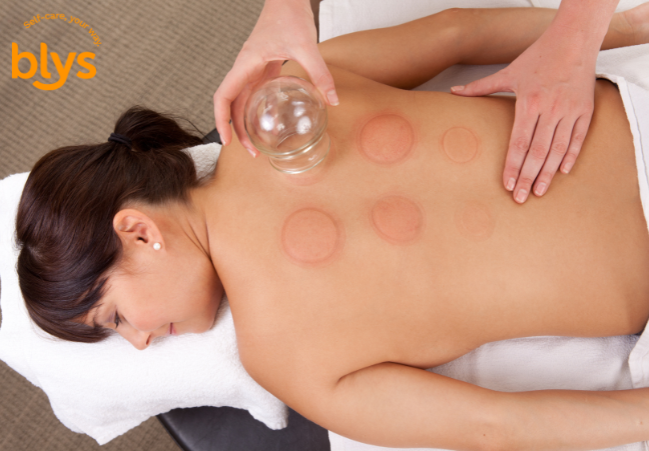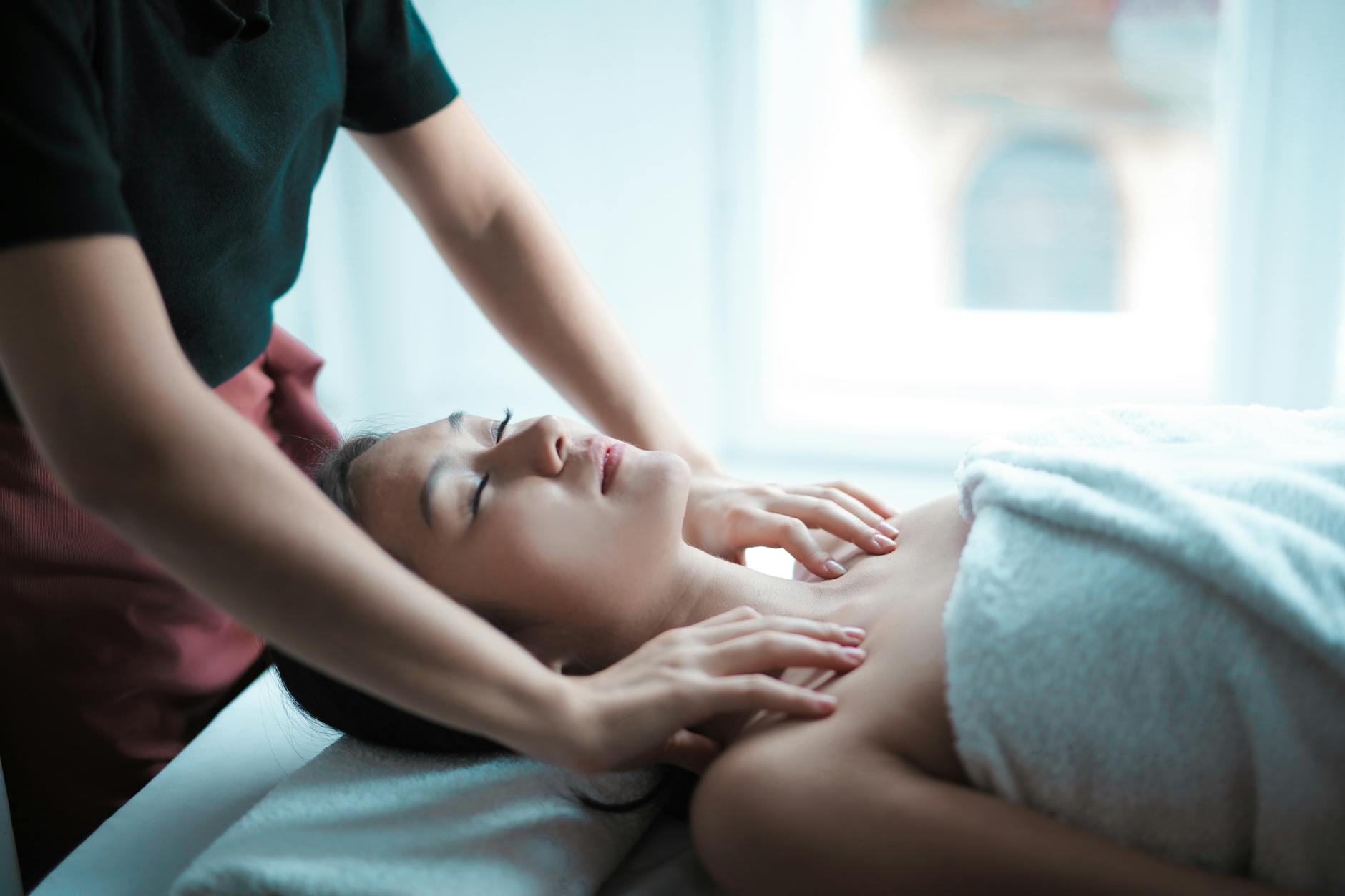
Cupping therapy has been around for thousands of years, with roots in Traditional Chinese Medicine, Middle Eastern healing practices, and even early Greco-Arabic medicine. Today, it’s gaining popularity across in the UK as more people explore natural wellness solutions for recovery, stress relief, and overall balance.
Whether you’ve seen the distinctive circular marks on athletes or heard about its detoxifying effects, cupping is no longer just an ancient tradition; it’s become part of modern mobile wellness. But not all cupping is the same. There are different types of cupping therapy, each with its own technique, intensity, and purpose. Some methods, like dry cupping, are non-invasive and ideal for easing muscle tightness or promoting relaxation.
Others like wet cupping, involve more intensive techniques designed to draw out deeper stagnation. There’s also fire cupping, which uses heat to create suction, and modern suction cups, which offer a clean, controlled approach with no flames or incisions.
Each technique offers distinct benefits and suits different needs, whether it’s relieving post-workout soreness, supporting circulation, or helping the body detox. If you’re considering trying cupping for the first time or simply want to understand which method is best for your wellness goals, this guide will walk you through the options, their differences, and what to expect.
Curious to try it for yourself? Book a mobile cupping massage with Blys today—wellness delivered to your door.
What Is Cupping Therapy?
Cupping therapy is a bodywork technique that uses suction to help stimulate blood flow, relieve muscle tension, and support the body’s natural healing processes. While it may seem like a modern trend, it actually has a deep history rooted in ancient medicine, and it’s still used today by massage therapists, allied health practitioners, and wellness providers around the world.
Using cups made of glass, silicone, or plastic, cupping involves applying negative pressure to targeted areas of the skin. The suction lifts the skin and underlying tissues, helping bring fresh circulation to the area and encouraging the release of muscle knots, fascial tension, and stagnation.
How Does It Work?
Here’s a closer look at what happens during a cupping session:
- Cups are placed on the skin: often on the back, shoulders, or legs where muscle tightness or tension is present.
- Suction is created using heat (in fire cupping) or a manual/vacuum pump (in modern cupping), forming a seal between the cup and skin.
- Negative pressure lifts the tissue: drawing blood to the surface and stimulating the flow of lymph and oxygen.
- The cups are left in place: for a few minutes, or gently moved across the skin for a gliding massage effect (known as dynamic cupping).
Benefits of Cupping Therapy
Depending on the type and application, cupping may help:
- Relieve sore or tight muscles
- Support recovery from workouts or physical strain
- Improve range of motion and flexibility
- Promote circulation and lymphatic drainage
- Ease tension headaches and stress
- Encourage relaxation and nervous system reset
A Therapy with Ancient Origins
Cupping has been practised for over 2,000 years across various cultures:
- Traditional Chinese Medicine (TCM): Used to balance qi (energy) and treat internal imbalances, pain, and stagnation.
- Middle Eastern & Islamic Medicine: Known as hijama, it plays a key role in traditional healing, especially during therapeutic fasting.
- Greco-Arabic and Egyptian Practices: Cupping was documented by Hippocrates and used throughout Europe and North Africa for fevers, inflammation, and detoxification.
Though the tools and methods have evolved, the core principle of using suction to stimulate healing remains the same.
Today, cupping is often integrated into modern massage services, offering a non-invasive way to unwind, recover, and restore balance. Blys offers in-home cupping massage using safe, hygienic techniques adapted to your comfort level.
You can also check out our blog on how cupping therapy can support skin health to learn how it may help with circulation, glow, and overall skin vitality.
Dry Cupping: The Most Common Method
Dry cupping is the most widely practised form of cupping therapy today, particularly popular among mobile massage services like Blys. This non-invasive method involves placing cups usually made of glass, silicone, or plastic onto the skin and using a hand-held pump or vacuum device to create suction.
Unlike wet cupping, there are no incisions or bloodletting involved, making it a gentle yet effective option.
During a session, the therapist applies cups to targeted areas, often the back, shoulders, legs, or neck, and creates negative pressure by extracting the air. This suction pulls the skin and underlying tissues upward, which promotes tissue separation, enhances blood flow, and releases tight fascia.
Cups are typically left in place for 5 to 15 minutes, though some therapists also use dynamic cupping, gently sliding them across the skin to create a massage effect.
When To Use Dry Cupping
Dry cupping is ideal for people experiencing persistent muscle tightness, physical fatigue, or stress-related discomfort. It’s frequently used after vigorous exercise to aid recovery or to relieve strain from repetitive activities like work or driving. Because it doesn’t break the skin, it’s often the preferred choice for first-time clients or anyone seeking a soothing yet impactful wellness treatment.
Benefits
Clients often report relief in several ways. The targeted suction boosts local circulation, delivering oxygen and nutrients to the tissue while helping flush out metabolic waste. As the suction loosens tight muscle fibres and fascia, many experience improved flexibility, reduced pain, and a deeper state of relaxation.
It also pairs well with other massage techniques, amplifying their effectiveness by preconditioning stubborn areas.
Research Insight
There is growing evidence supporting dry cupping for musculoskeletal pain. A 2020 systematic review, which analysed 21 controlled trials with over 1,000 participants, found that dry cupping significantly reduced pain in patients with chronic neck and non-specific low back pain.
The changes in pain scores were clinically meaningful, although the quality of evidence was rated low to moderate.
Interested in trying dry cupping with a professional? Book a mobile cupping massage with Blys and experience expert care at home no clinic visit needed.
Wet Cupping: The More Invasive Option
Wet cupping, also known as hijama or therapeutic bloodletting, is a more intensive variation of cupping therapy. It builds upon the suction principle of dry cupping by adding a minor, controlled incision to draw out a small amount of blood.
In a typical session, the therapist first applies dry cupping to create suction. Once the skin is lifted, they make tiny incisions using a sterile blade or needle. The cups are then reapplied, allowing suction to draw out a small amount of blood.
While the amount of blood removed is minimal, this added step is believed to enhance the detoxifying effects of the treatment. Depending on the condition being treated, the entire session may last between 10 and 30 minutes.
When To Use Wet Cupping
Traditionally, wet cupping is used for issues thought to be related to stagnation or chronic inflammation. These include migraines, persistent joint or muscle pain, and immune-related conditions.
Some alternative medicine traditions also use it in detox protocols and to support conditions that have not responded to gentler techniques. Because of the added steps and physiological impact, it’s considered a more advanced form of therapy.
Benefits
Proponents of wet cupping believe it helps remove stagnated blood, metabolic waste, and toxins more effectively than dry cupping alone. They suggest that drawing out a small volume of blood may help improve circulation, reduce inflammation, and deliver restorative oxygen and nutrients to the affected area.
Research Insight
Emerging research suggests wet cupping may have measurable physiological effects. A 2014 study on 31 healthy volunteers found that blood extracted during wet cupping had higher levels of oxidative markers such as malondialdehyde and nitric oxide and lower antioxidant enzyme activity compared to venous blood, suggesting the procedure could reduce oxidative stress in the body.
A follow-up investigation observed that periodic wet cupping sessions significantly improved antioxidant levels (including glutathione, superoxide dismutase, total antioxidant status, and catalase) and reduced oxidative stress markers in participants after three monthly treatments.
Note
It’s important to note that wet cupping involves skin incision and bloodletting, which requires more stringent hygiene, training, and medical oversight than dry cupping. For this reason, Blys does not offer wet cupping. We focus instead on safe, non-invasive options, delivered by trained therapists, to ensure comfort and safety.
If it’s your first time trying cupping, you might find this guide to your first cupping therapy session helpful it covers everything from what to expect to how to prepare.
Dry vs Wet Cupping: What’s the Difference?
If you’re new to cupping therapy, the variety of methods available might feel overwhelming. Two of the most commonly compared techniques are dry cupping and wet cupping. While they share the same foundational principle of using suction to stimulate healing, they differ significantly in how they’re performed, what they’re used for, and who should administer them.
Here’s a breakdown of the key differences:
| Feature | Dry Cupping | Wet Cupping |
| Skin Incisions | No | Yes |
| Suitable For | General wellness, muscle tension, relaxation | Detoxification, inflammation management |
| Pain Level | Mild pressure sensation | Moderate (due to controlled skin pricking) |
| Performed by | Massage therapists | Medically trained professionals |
| Offered by Blys? | Yes | No |
Dry cupping is gentle, accessible, and ideal for people looking for stress relief, post-workout recovery, or muscle relaxation. It’s widely offered through mobile massage services like Blys and can be safely performed by qualified massage therapists.
Wet cupping, on the other hand, is more invasive and typically reserved for more specialised settings. Because it involves skin incisions and bloodletting, it must be carried out by practitioners with medical training and is not available through Blys.
Still not sure which type suits you? For a safe, convenient, and effective option, book a dry cupping massage with Blys and enjoy professional care from the comfort of your home.
Safety, Aftercare, and What to Expect
Cupping therapy is widely considered safe when performed by trained professionals using proper techniques and sanitised equipment. At Blys, therapists use clean, modern suction cups and follow strict hygiene protocols to ensure a comfortable and secure experience.
Still, it’s important to understand how your body might respond to treatment and what you should do afterward to support recovery.
Is It Safe?
For most people, yes cupping is a low-risk, non-invasive therapy. It does not involve medication, injections, or deep tissue trauma, which makes it suitable for a wide range of individuals. However, there are some exceptions.
Cupping may not be advised if you have broken skin, active skin conditions such as eczema or psoriasis in the area being treated, or underlying issues like clotting disorders or if you’re taking blood thinners.
It’s also not ideal for those with very fragile veins or uncontrolled cardiovascular conditions. If you have concerns about your suitability for cupping therapy, it’s best to check with your GP before booking.
Blys therapists are trained to screen for contraindications and will adapt the treatment or recommend alternative approaches if cupping isn’t suitable for you.
Aftercare Tips
Once your session is over, it’s normal to see red or purplish circular marks where the cups were placed. These marks are caused by the suction drawing blood to the surface and are not painful. They usually fade within a few days.
While there’s minimal downtime, your body may still be in recovery mode following the treatment, especially if it was your first session. To ensure proper aftercare, avoid hot showers, saunas, and steam rooms for the next 24 hours, as heat can irritate the skin further.
It’s also a good idea to skip high-intensity workouts during this time to give your muscles a chance to rest. Staying well hydrated helps your lymphatic system clear out cellular waste more efficiently, and you might notice that you feel more relaxed or even sleepy afterward so try to get some rest if possible.
Make sure the treated area remains clean and dry. If your skin feels sensitive or tender, avoid applying scented lotions or topical creams for at least a day unless otherwise recommended by your therapist. For more detailed information about what cupping marks mean and how to care for your skin post-session, you can check out our cupping aftercare guide here.
Which Cupping Type is Right for You?
Cupping therapy isn’t a one-size-fits-all solution and that’s the beauty of it. Each type of cupping offers something unique, whether you’re seeking deep relaxation, faster post-exercise recovery, support for inflammation, or a connection to traditional healing practices. The right choice comes down to your personal goals, comfort level, and any health considerations you may have.
If you’re after a safe, effective, and non-invasive approach, dry cupping or modern suction cupping is often the best place to start. These methods are gentle yet powerful, offering real results without the need for downtime. They’re ideal for relieving muscle tension, boosting circulation, and supporting overall well-being all without the complexity or invasiveness of wet or fire cupping.
At Blys, our focus is on delivering expert mobile cupping massage that fits seamlessly into your lifestyle. Our therapists use modern cupping techniques that are clean, comfortable, and tailored to your needs. Whether you’re new to cupping or looking to make it a regular part of your wellness routine, you can count on a safe and professional experience from start to finish.
Ready to experience the benefits? Book a cupping massage with Blys and enjoy expert care from the comfort of your home.





